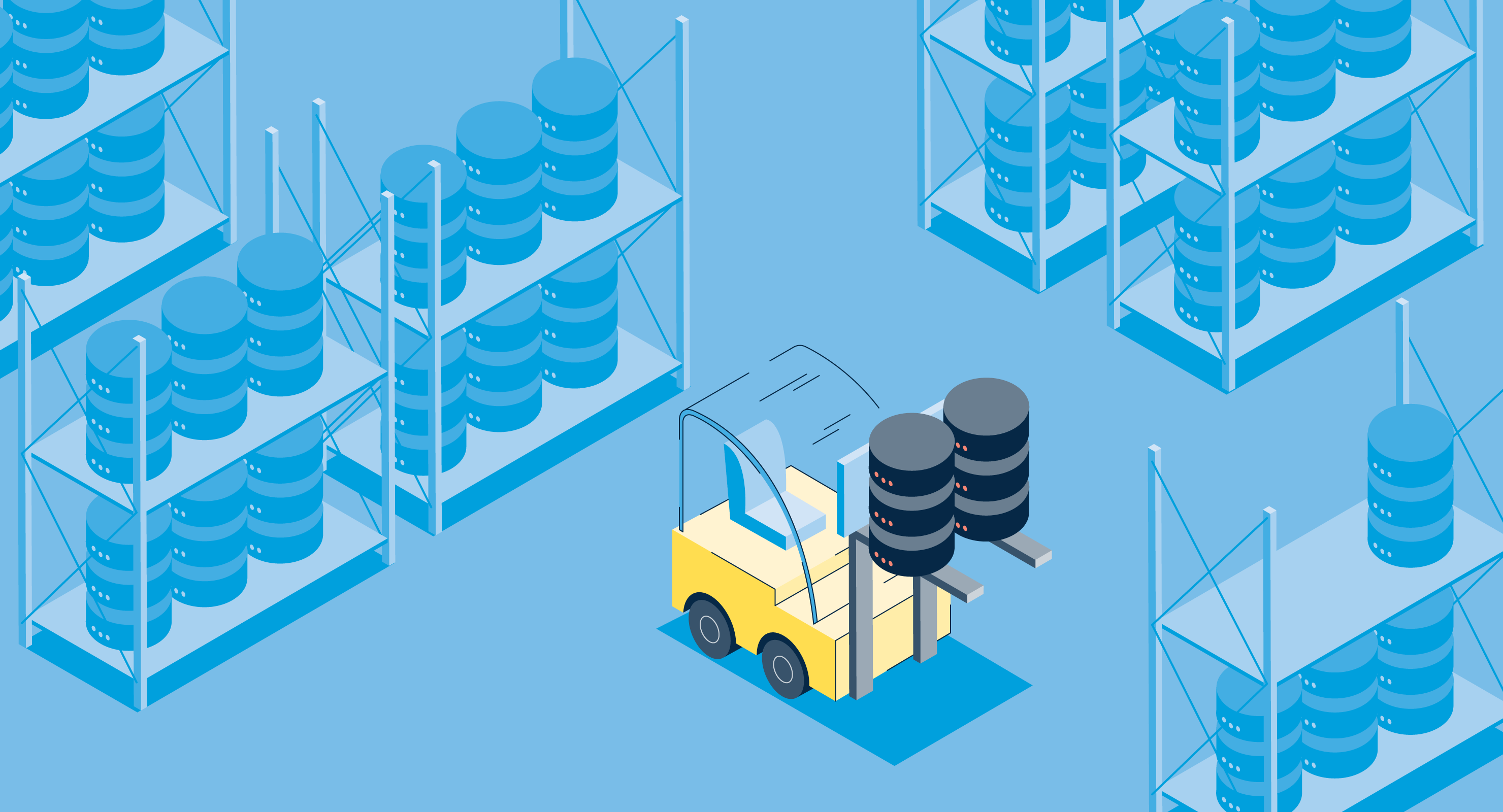What is just-in-time?
Just-in-time or JIT is an inventory management method of receiving raw materials from established suppliers at the outset of a production cycle to minimize stock handling, increase inventory turnover and lower storage costs.
JIT is a continuous improvement cycle that regulates supply chain processes for optimal efficiency and zero factory waste. It enables logistics and supply chain providers to manage their inventory better and minimize operational glitches during a production cycle.
Under its umbrella, businesses can purchase raw supplies in multiple installments in a single day or over a specific period to meet consumer demand. These materials should always come from a reliable supplier so that both quality and quantity aren’t compromised.
Also known as lean manufacturing, JIT streamlines overall manufacturing operations while reducing warehousing costs, maintenance worries, and supply chain inefficiencies to produce finished goods in time to cater to end customers holistically. JIT can be used with an organization’s inventory management software that automatically tracks, analyzes, and updates inventory requirements to save time and reduce production hassles.
Basic elements of just-in-time
Here are some elements a company should keep in mind before deploying the JIT inventory management system in its manufacturing process:
- Reliable suppliers. Reliable suppliers can be crucial to JIT's success. Even in case of any unwelcomed contingency like bad weather, strike, etc., raw materials are delivered on time or beforehand without compromise on quality.
- Cross-trained workforce. Employing cross-trained workforce can prove beneficial because of their multi-functioning skills. One employee who can work on multiple machines can fill in for extra labor.
- Local sourcing. According to the JIT strategy, raw materials need to be sourced locally due to the time-bound restrictions on manufacturers to produce, assemble, and deliver every order.
- Production leveling. JIT ensures uniformity in raw materials or goods moving in and out of production. All units within a supply chain work with definite load and scheduling capacities.
- Lot size. It is advisable to have an appropriate lot size or batch size of goods to send for production in one go. This helps reduce inventory fluctuation, warehousing, and shipment costs and easily inspect finished goods.
- No safety stock. Fallback inventory can hamper employee productivity. As a result, the JIT strategy discourages securing additional stock for better employee productivity and waste reduction.
- Setup between jobs. JIT reduces setup time, synchronizes tasks, and helps detect errors quickly.
Example of just-in-time
Just-in-time is ideal for the B2B, B2C, or D2C industry segments. In many cases, the product is delivered directly to the customer before hitting the shop shelves.
Let’s say ABC Company, an online resale platform, uses the JIT inventory management method to streamline its delivery process.
When a customer places an order, ABC company sources the merchandise from official suppliers. The fixed turnaround time for supplies to reach the company’s manufacturing plant is one day. Once the product arrives, it goes through the necessary cut and stitching process, i,e., adding patterns, embroidery, and embellishments, and is delivered directly to the end customer.
In some cases, ready-made merchandise can be dropshipped directly to customers without intermediaries. As the demand for a product fades, it’s updated as “sold-out” or “no longer available” on the application. This way, minimal inventory draws maximum output without any storage costs.
How does just-in-time work?
JIT is a trademark of simplicity and flexibility for manufacturing organizations as it reduces inventory and streamlines the entire production cycle, from design to delivery. It integrates every functional cell within a production unit, and clarifies the roles and responsibilities of each worker to manage inventory pricing better, and increase turnover.
JIT also challenges every workstation handler's ability to outpace current product runs and manufacture multiple items simultaneously to optimize energy distribution and maximize cash outflow.
Here is a brief outline of how the JIT model works.
- Demand planning: JIT starts with precise demand planning for the acquisition and adjustment of supply. Since businesses don’t have any stock security to fall back on, accurate planning helps reduce stock costs and stabilizes the production schedule.
- Customer orders: When a customer registers an order, the JIT system is triggered, and all the subunits of a manufacturing plant are alerted. At this moment, the manufacturing manager reports a call or an intimation for supplies to the supply manager.
- Product design: This is a flexible step that can take place at any time in the JIT cycle. The product design is outlined on paper as soon as the order is placed. In other cases, it could be created after receiving the supplies.
- Raw materials supply: Next, the manufacturing manager schedules a run with the supplier and informs them of the necessary supply requirements through a bill of materials (BOM). At any point, replenishment is managed via Kanban Scheduling i.e a Japanese technique to indicate supply shortage via visual cues, flashcards, or human gestures.
- Working cells: All internal supply chain operations take place in working cells. In JIT, these workstations are adjacent, define the total production capacity, and extrapolate the total number of finished goods hitting the shop shelves.
-
Load uniformity: Machines' loading and scheduling capacity should be leveled beforehand to minimize deflections or glitches during ongoing manufacturing.
-
Assembly of parts: Once the manufacturing process is complete, the product is assembled using a machine or an assembler before shipping it to the respective warehouse. In the D2C (direct-to-customer) domain, the product is delivered directly to the customer from this stage.
-
Flow scheduling: Flow scheduling maintains a smooth equilibrium between various processes in a specific production cycle.
- Worker's discipline: Production employees need to maintain decorum and work collaboratively with other supply chain members to understand the product's use cases before shipping it to the customer.
- Order fulfillment: Once the above steps are complete, the product is transferred from the manufacturing unit to the shop floor with ample time in hand. If the production run is short, the manufacturer immediately pulls in the second-order for more raw materials.
JIT model ensures every member of the manufacturing unit works in complete harmony, resulting in a "residue-free" end product with savings in time, resources, and cash investments.
Benefits of using just-in-time
Companies that follow the JIT inventory management system manufacture sellable stock when needed but no sooner. JIT protects a company from bankruptcy, even during a crisis, and stabilizes business operations, regardless of overall revenue. Even if a company adopting JIT hits a roadblock, it can easily survive without biting the bullet of permanently shutting down services.
Here are some more benefits of JIT:
- Product switching: As the raw goods arrive at the manufacturing unit right when a customer order is placed, the production run is much shorter. This allows organizations to simultaneously manage, produce, and fulfill multiple customer orders.
- In-process inventory: When multiple orders flow in and get fulfilled individually, there is limited to nill "in-process" inventory in JIT.
- Constant supplier fallback: In JIT, a reliable supplier(s) network provides a steady stream of quality raw materials one or multiple times in a single day without fail, improving every process within the production cycle.
- Faster processing of goods: Omitting raw materials in bulk from the production cycle leads to faster production of goods that sell before they make it to the stores.
- Agility and flexibility: JIT systems are far more agile and flexible than traditional inventory management systems. Most companies also use it as a cost-cutting strategy to maximize revenue while reducing inventory costs.
- Lower transportation costs: Because JIT enables assembling raw materials in multiple batches from suppliers within a city, businesses no longer have to empty their pockets to pay transporters or third-party logistic companies to ship orders.
- Increased employment: Not only can JIT increase the efficiency of a company's process workflows, but it can also increase engagement in a particular demographic. Companies can recruit local crowds in their logistics and supply chain verticals, enable businesses to run parallel, and open doors to excellent employment opportunities.
Just-in-time best practices
Using JIT as a preferable way to manage inventory increases employee and customer satisfaction, optimize warehouse caretaking, and sets businesses on the right track for 100% sales growth with minimum working capital. To ensure overall fluidity in production, companies should implement JIT with discipline, structure, and some explicit practices.
Here are some best JIT practices that businesses can follow to stay ahead of the curve:
- Business KPIs: Get a comprehensive overview of the KPIs and the latest sales trends. JIT helps accurately forecast demand through powerful machine learning, NLP, and other predictive analytics algorithms and get robust industry knowledge.
- Supply chain fluidity: Ensure ease in transportation and processing of goods from one demographic to another. The more fluidity, the smoother the cycle of inventory transition will be, keeping the company in business.
- Inventory control software: Integrate the JIT methodology with existing inventory control software to streamline processes, manage cycle inventory, and optimize the production workflows’ overall efficiency.
- Supplier relationships: Maintain regular contact with key suppliers and understand their sourcing-related protocols to better understand what to adjust in the organization to optimize the business expansion strategy.
- Work-in-process: Reduce the number of "unfinished" or "work-in-progress (WIP)" goods to maintain an efficient operational flow, produce goods at a much faster scale, and eliminate unwanted bottlenecks.
- Accurate demand forecasting: Accurate demand forecasting reduces buffer inventory and enables organizations to deliver goods on time. Use powerful machine learning algorithms and observe sales metrics to predict demand accurately, promote awareness, and sustain growth throughout the supply chain cycle.
- Diverse skill force: Hire a multi-skilled talent pool that can exhibit their abilities across verticals in the production cycle. Implementing this strategy will also positively reduce WIP inventory and save significant time and labor.
Just-in-time vs. just-in-case
While the JIT method regulates inventory and ensures maximum efficiency at all production levels, the just-in-case (JIC) system keeps warehouses filled with extra inventory. This surplus can be useful when customer demand suddenly spikes or during unpredictable supplier conditions.
A company following the JIT strategy receives supply only when needed. But on the flip side, JIC suggests keeping a reserve of extra goods to anticipate the probability of losses in case of a supply shortage. While JIT results in zero or minimal inventory costs, JIC incurs higher warehousing costs as more inventory is stored.
Just-in-time is a modern inventory management method, whereas JIC has always been around for stockpiling supplies before production to protect a company from running out of service.

Shreya Mattoo
Shreya Mattoo is a Content Marketing Specialist at G2. She completed her Bachelor's in Computer Applications and is now pursuing Master's in Strategy and Leadership from Deakin University. She also holds an Advance Diploma in Business Analytics from NSDC. Her expertise lies in developing content around Augmented Reality, Virtual Reality, Artificial intelligence, Machine Learning, Peer Review Code, and Development Software. She wants to spread awareness for self-assist technologies in the tech community. When not working, she is either jamming out to rock music, reading crime fiction, or channeling her inner chef in the kitchen.




















